From Severance to Industry, the office is no longer imagined as a site of absurdity, but one of tragic flaws, grave errors and violence
The first series of Industry (2020-2022) – the sexed-up, drug-fuelled trading floor show written by two ex-finance bros, and widely hailed as ‘the first great Gen Z workplace drama’ — kicked off with a kid dying in a toilet cubicle. One of five grads vying for positions at prestigious London banking institution Pierpoint, Hari (Nabhaan Rizwan) attempts to prove his value to the company by never leaving it. He gulps Red Bull, pops Modafinil, and uses his Pierpoint gilet as a pillow when he curls up on the floor of a toilet cubicle to sleep – the same one where, 48 hours or so later, he will die. Don’t get comfortable, the show tells its viewers, disaster could strike at any time. This is a workplace of excess and extremity, where people are pushed, and push themselves, beyond all rational limits.
After Hari’s pass automatically flags that he hasn’t left the building in over two days, his manager demands he makes a swift exit. It is clear that this is not a matter of personal concern, but of optics – Hari must be seen to mimic some semblance of a ‘normal’ work-life routine, for appearances’ sake. But if Hari’s death was the big bang that got the first series going, Industry’s second series starts with its opposing whimper. At the start of the latter, a prevailing concern with appearances and visibility remains, but, rather than being extolled to leave the office and be seen, at least superficially, to get some rest and maintain a ‘personal life’, now Harper Stern (played by Myha’la Herrold), is told in no uncertain terms to stop resting on her laurels and get back to the desk. This, it is soon made clear, is Industry post-COVID. Harper is holed up in a four-star hotel, conducting business via Zoom. Where before the state of work versus play was signalled by Hari’s Pierpoint-branded gilet-cum-pillow, here it is the dressing gown Harper wears while “drifting around a hotel suite, brewing coffee and attacking [herself]”, as her outspoken colleague Rishi (Sagar Radia) puts it. Despite claiming to “put in 12-hour days,” Harper is seen to be on an “extended vacay”. “You’re invisible,” she is told by volatile managing director Eric Tao (Ken Leung) – who often plays the role of problematic work-daddy to Harper, complete with palpable Oedipal dynamics. “The person I’ve been speaking to over the phone on Zoom,” Eric tells her, “is not who I hired”; “you’re passive, you’re sloppy”; “as much as we do this job over the phone, there’s no substitute for being up in a client’s face, up in a trader’s face, seeing the whites of their eyes.” He demands her swift return.
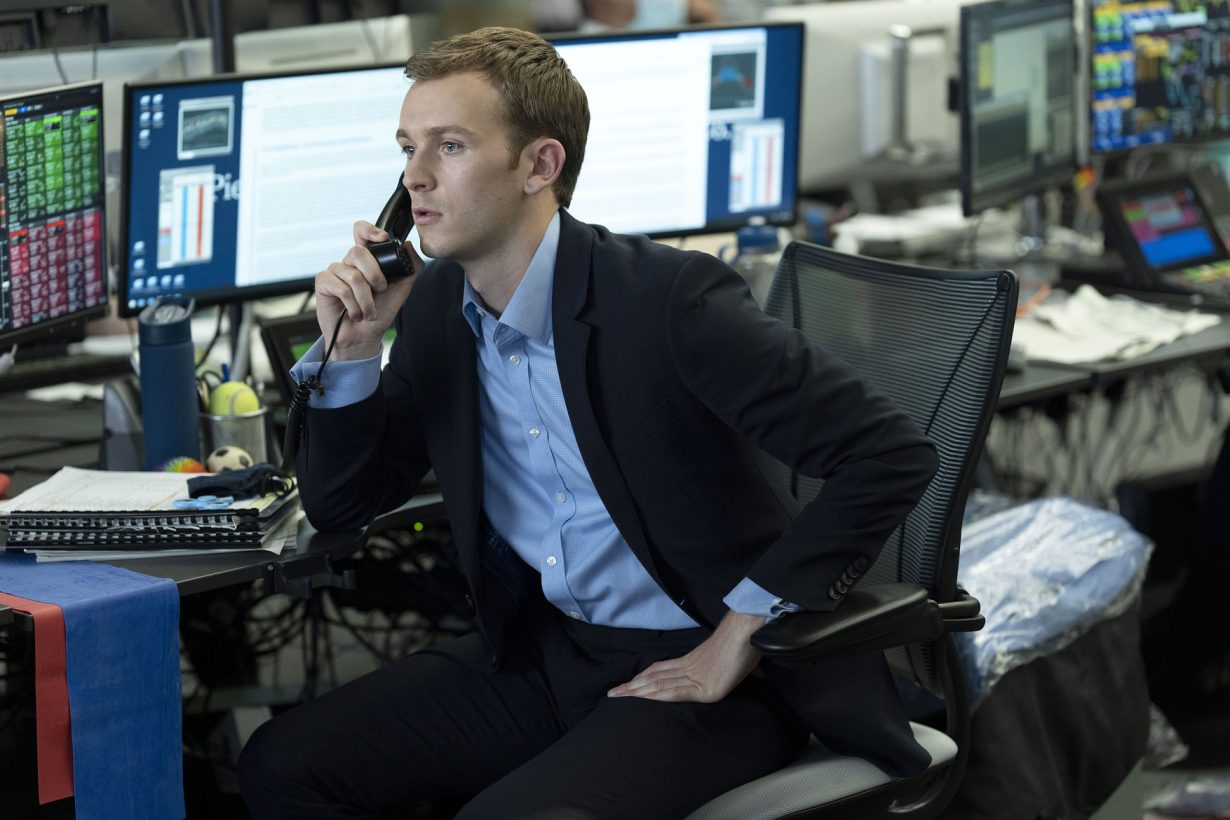
On one level, then, the narrative at the heart of this ‘Gen Z workplace drama’ appears to be about the relationship between success and control – achieving the perfect calibration of desk time with time ‘off’. Balancing the books, in other words. Being physically present in the office both too much or too little introduces the chaotic whiff of human need and desire into what is supposed to be a finely tuned, disembodied system. All work and no play makes Hari desperate, then a goner. All “vacay” makes Harper a deadbeat. Boom and bust.
Yet, while Pierpoint’s trading floor certainly acts as a character in its own right – its open plan hubbub and beeping, crisp blue tone lighting, screens and glass and occasional views of the Shard all screaming ‘contemporary corporate office culture’ and ‘post-industrial industry’ – the series’ second outing also seems at pains to stress that it is outdated. When Eric commands Harper that “there’s no substitute for being up in a client’s face… seeing the whites of their eyes,” he is not laying down the law about being in the office, but being in person – “living it.”
While a lack of control and balance might reek of failure, on another, deeper level then, this is a world where success requires work to permeate every area of its characters’ lives. The ‘workplace’ is diffuse. Drugs and sex and death happen in the toilet stalls, but work happens there too. Work happens in hotel bars and on tennis courts and pheasant shoots. “Your worth to the firm is who you know outside the firm,” Harper is told in season two’s first episode. In her case, this means turning her year-long hotel stay to her advantage. That “extended vacay” of “drifting around” is where she hooks her biggest fish: multi-billionaire Jesse Bloom, played with eccentric aplomb by Jay Duplass, who is also known as “Mr COVID”, after effectively turning the pandemic to personal profit. It’s clear that, in this industry, networking is the most important work. And so, partying is work and sex is work and every human interaction is also a transaction. Harry Lawtey’s working-class banker with a humiliation fetish, Robert, lets a client wank him off in a chauffeured car and ‘jokingly’ calls her mummy; Yasmin (Marisa Abela) sleeps with a family friend who also happens to be managing her family money. Harper never has sex with Jesse, but he calls her at 4am and they talk business in various hotel rooms after dark. Work hard, play hard, in the end it’s all the same.
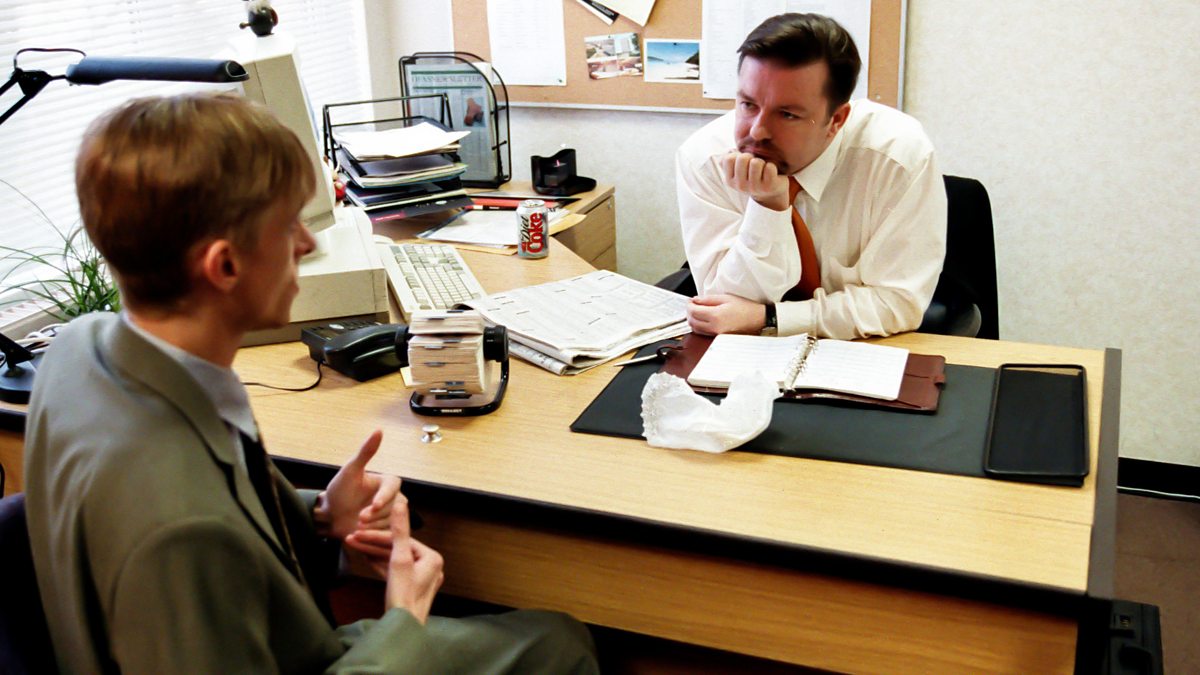
There seems to be a consensus that workplace dramas have gotten darker recently. In 2001, The Office burst onto UK screens, presenting the modern work environment as a space of gentle satire, stupid pranks, petty frustrations and flirtation. Scrubs (2001-10), Green Wing (2004-07) and The IT Crowd (2006-10) all fell somewhere in this vein, rendering work with a wink, and workplaces as essentially absurd. Then, in the summer of 2007, as losses on mortgage-related assets began to spark the financial crisis into being, Mad Men arrived and spun the wheel into new territory, with Don Draper walking a tightrope between a high-flying professional life and a distinctly shaky personal one. Yet, while Mad Men ostensibly portrayed the death of the American Dream – depicting less a work-life balance than a work-life bleed — it was also undeniably sexy. Sterling Cooper was, simply, cool: all dark wood and Eames chairs; whiskey decanters and Rothko paintings. For an audience hooked on ‘mid-century modern’ interior design, it couldn’t be anything other than lushly glamorous; a gloss sheen vision of office life before the mass implementation of the cubicle, the hot desk, the Zoom call. The dial had moved from absurdist workplace comedy to nostalgic office romance.
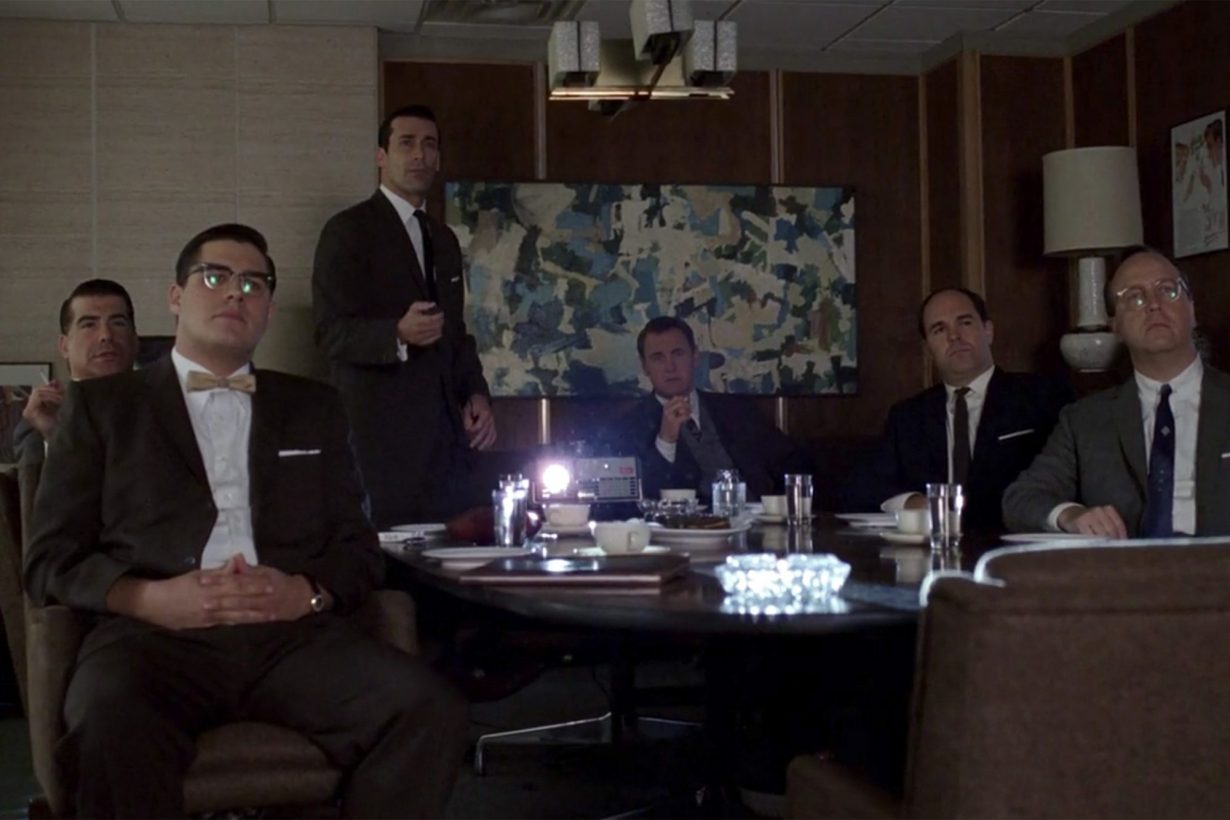
Today we have Succession (2018-), Severance (2022), and Industry. Stark and apathetic landscapes of glass and steel. Forbidding mega-corporations. Many have dubbed this ‘new generation’ of workplace drama ‘dark’, ‘gritty’ and ‘dystopian’. Yet, it makes more sense to think of this as a shift from comedy to tragedy. The workplace is no longer imagined as a site of absurdity, but one of tragic flaws, grave errors, reversal of fortunes, violence, the overthrow of fathers. Industry first kicking off with a death, and then, this series, with an episode titled simply ‘Daddy’ makes sense, because the show spins around the demise of twentieth-century models of work – a death that nevertheless still haunts. “A corner office is a coffin,” Eric says at one point in the second series. Later, Harper observes: “brick and mortar is dead. No matter what any tech bro tells you.” The old world is dying, and the new world struggles to be born. This, as Gramsci says, is the time of monsters.
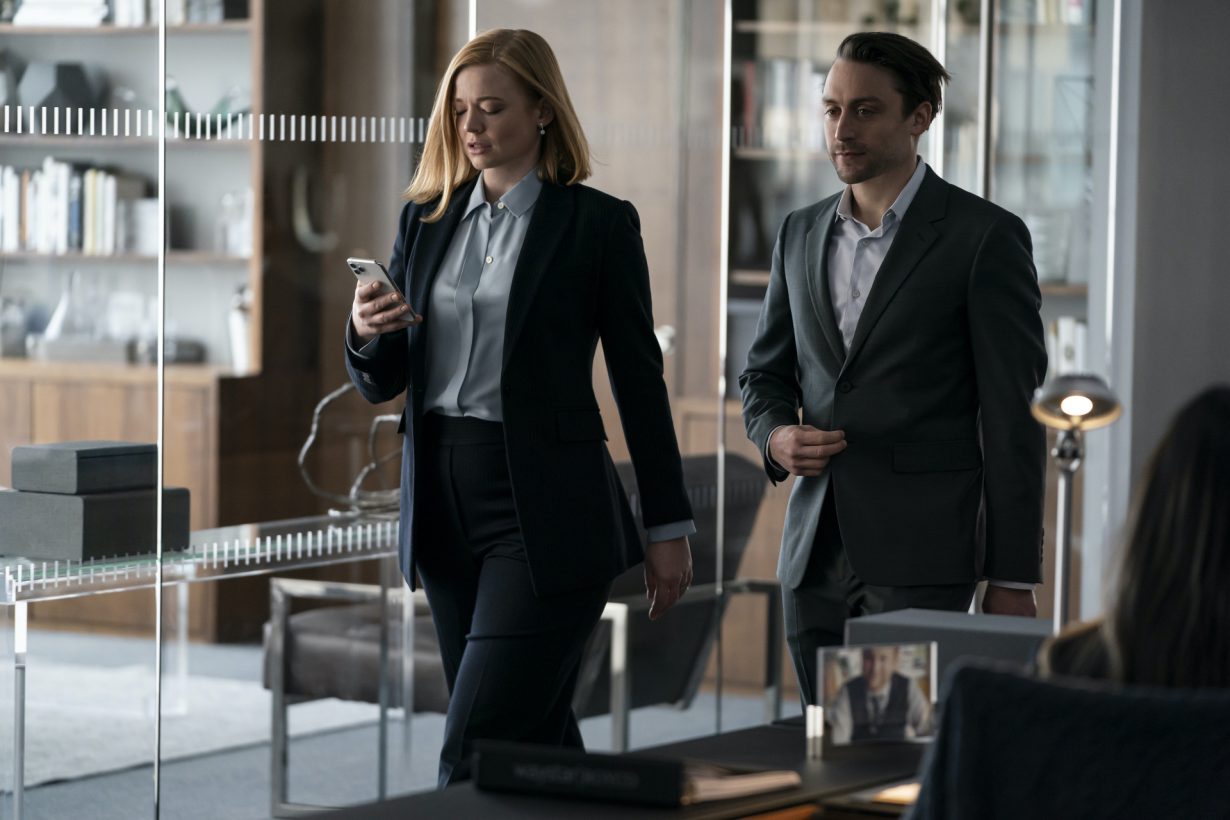
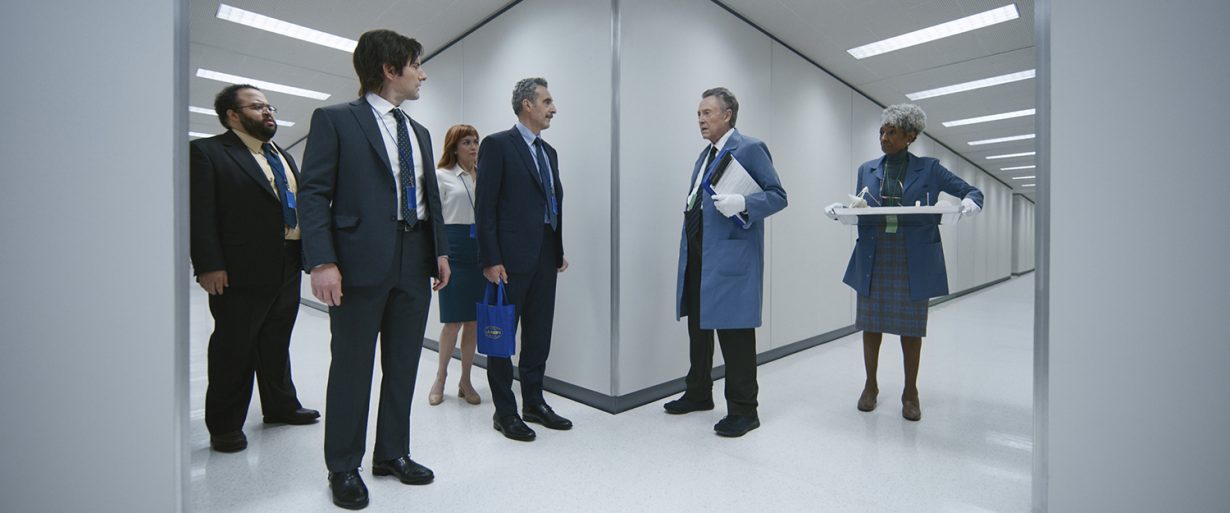
One of the most jarring elements of Industry is how it fixes on a ‘new generation’ of financiers. The central cast of 20-something characters are all intended (to some degree) to be outsiders to the old-fashioned straight-white-male banking industry. All either queer, or female, or working-class, or from an ethnic minority background, they are presented as rebels and agitators, trying to get ahead in a world that doesn’t value them; trying to prove the existence of a meritocracy. Yet, what unites them with the old-guard elite is, of course, their love of capital, trade, Thatcher, and the free-market. They are ‘socially liberal but fiscally conservative’. They are model members of the enterprising class – self-sacrificing and self-motivated workers, who offer their labour because it is experienced as non-laborious pleasure or compulsion. They are “living it,” work resides in “the whites of their eyes”.
In a new book titled The Office of Good Intentions. Human(s) Work (2022), architects Florian Idenburg and LeeAnn Suen take a trip through the history of American office design. As the ‘good intentions’ of the title suggests, they are interested in utopianism – both architectural and tech – and its inevitable corruption. The book opens with a case study of advertising firm Chiat/Day, created in 1968. According to Idenburg and Suen, co-founder Jay Chiat’s ‘singular force of will’ and general demeanour was described as ‘arrogant, revolutionary, and extremely cool.’ His ‘obsession with creative resilience in the face of instability,’ led to a nomadic workplace protocol: he envisioned a fully virtual office, consisting of no closed offices, no fixed desks, and no dedicated personal equipment. Next-gen advertising nomads could, in Chiat’s vision, ‘perform tasks wherever they liked.’ Equipped with virtual desktops and freed from the time clock, they had ‘the freedom to sleep late, work from home, write at the beach, ‘and get paid for it’.’ Chiat’s flagship headquarters would be located in Venice, California – industry lore tells how it was the first successful advertising agency without a Madison Avenue address. No worker was allowed to work in the same place two days in a row.
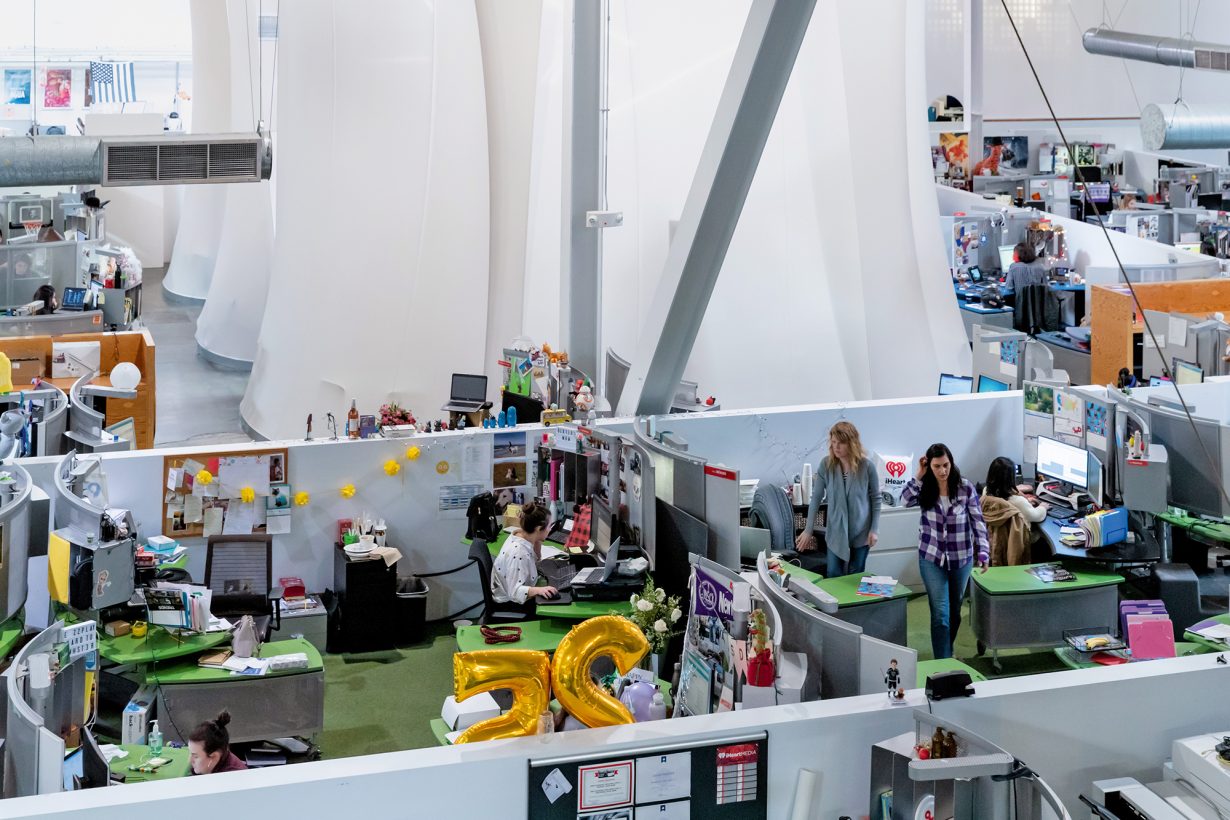
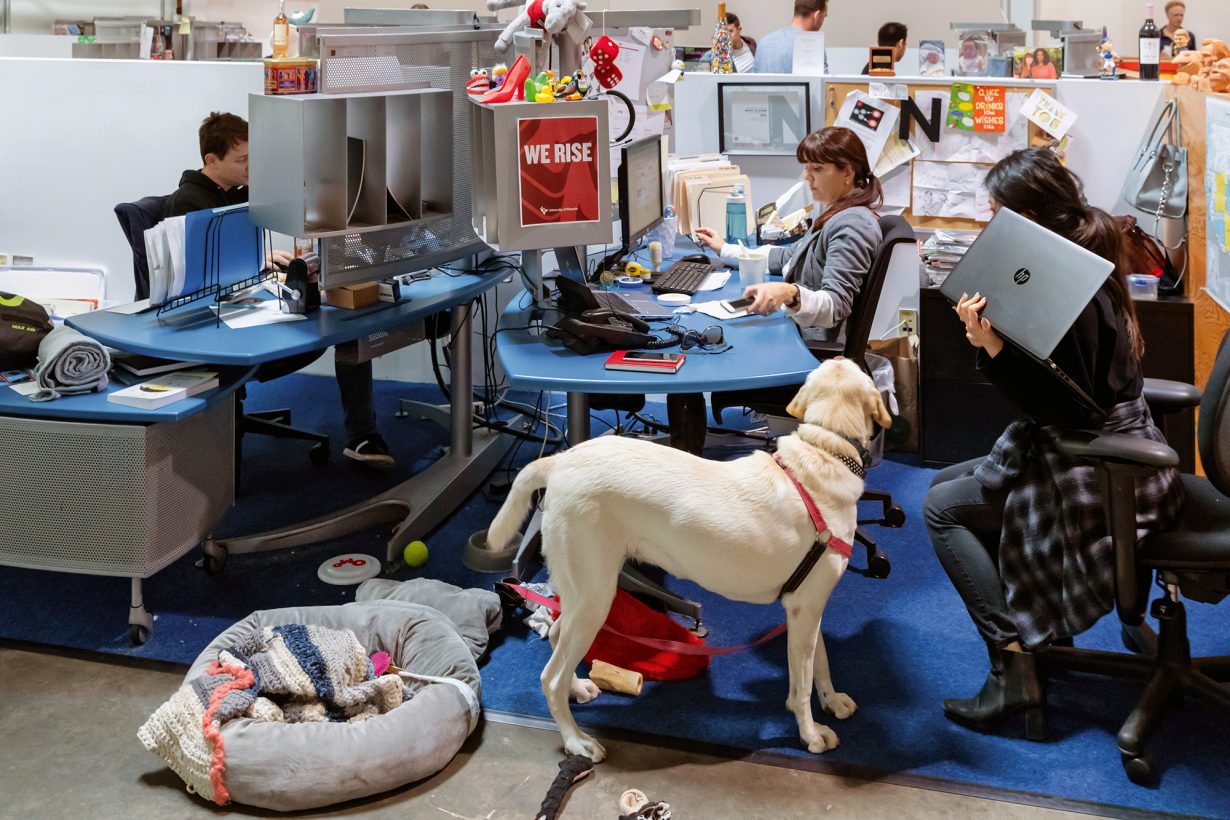
Yet, it was still the era of paper files, and employees still needed a way to work together. ‘After six months,’ Idenburg and Suen write, ‘resistance took root.’ In New York, employees stopped coming into the office, or camped out in conference rooms, while in LA, workers ‘used the trunks of their cars as filing cabinets and stopped returning their portable phones and PowerBooks.’ In 1995, Chiat/Day was merged with TBWA, and Clive Wilkinson Architects were commissioned to design a Los Angeles headquarters for the newly reorganised company. Lee Clow, the firm’s chairman, became the company’s ‘cultural leader and creative soul’ following Chiat’s departure. The office he oversaw was, essentially, a giant playground. The coffee bar was composed of surfboards, there was a park with real sand underfoot and a full-size indoor basketball court emblazoned with the Jolly Roger’s skull and crossed swords. ‘Chiat and Clow,’ Idenburg and Suen argue, ‘both believed in a blurring of boundaries between life and work. For Chiat, this meant work should be able to go anywhere; for Clow, it meant giving employees a place at work to call home.’ Or, a place not of labour, but leisure; not a workplace at all, but a space for “living it.”
Never mind the car-boot filing cabinets, or the fact the trees and sand were housing pests. Chiat and Clow’s two distinct workplace visions have merged to form the dominant work culture of today, which happens “anywhere”, eulogises “singular force of will” and “resilience in the face of instability,” and is helmed by billionaires who strive to live like beach-bum nomads and pirates: the Silicon-Valley-cum-Burning-Man entrepreneurs. Take WeWork’s Adam Neumann or Elon Musk. They are ‘socially liberal’ in the sense of being libertarians, having co-opted the ‘free-wheeling’ language, drug culture and polyamorous spirit of the Californian hippy movement, and they are ‘fiscally conservative’ in the sense of hoarding capital through the exploitation of workers.
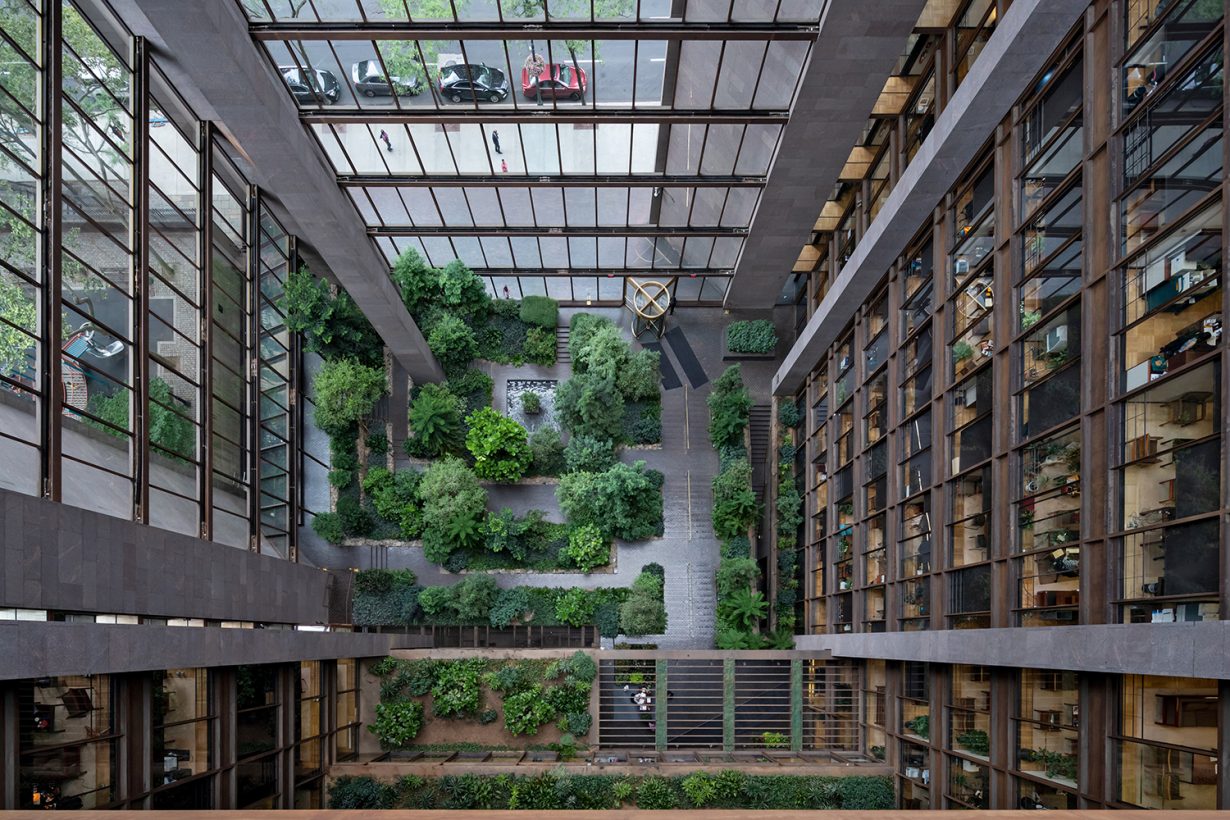
Looking at contemporary work culture, Idenburg and Suen argue in The Office of Good Intentions that ‘the work club, the rise of the corporate festival, the gig economy, and the creation of playgrounds for work are not simply thinly veiled strategies for encouraging workers to work more and earn less,’ but also ‘represent conscious efforts to reskin and rebrand wilful self-subjugation, an act that always shares a tenuous, unstable boundary with exploitation.’ And so, the most interesting element of Industry’s new season is Jesse Bloom, hedge fund billionaire and COVID-profiteer, and how this ‘new generation’ of enterprising financiers jump to placate, and serve him. Ultimately, rather than Pierpoint’s trading floor, the most significant and striking workspace the series depicts, is Bloom’s. He is found, in episode seven, in a vast ballroom, sitting at a trading desk with 15 screens, with a basketball hoop behind him. With this one image it’s clear the reason Industry is a ‘great Gen Z workplace drama’, is because it is the tragedy of our times.
Industry Season Two (2022) is available to stream now.
The Office of Good Intentions. Human(s) Work, 2022, is published by Taschen.
